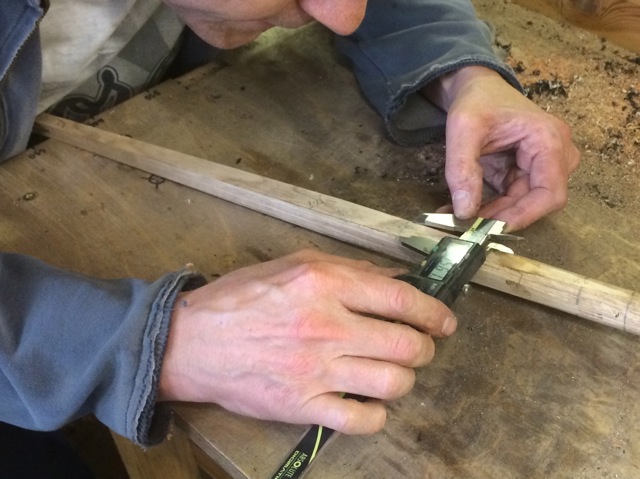Fine Details
*Attention to Detail*
At every stage, the ‘little’ things are considered. It would be easy to make cues without doing so, but it is the attention to small details that sets my cues apart from the competition.
Admittedly, many finer details may never be noticed, but I know they’re there, so that makes me happy…
Accuracy
Apart from the careful selection and preparation of shafts, I guess we should start with how hand splicing is done to make all the points even. When preparing the shaft for splicing, very accurate measurements are taken and recorded along the splice length.
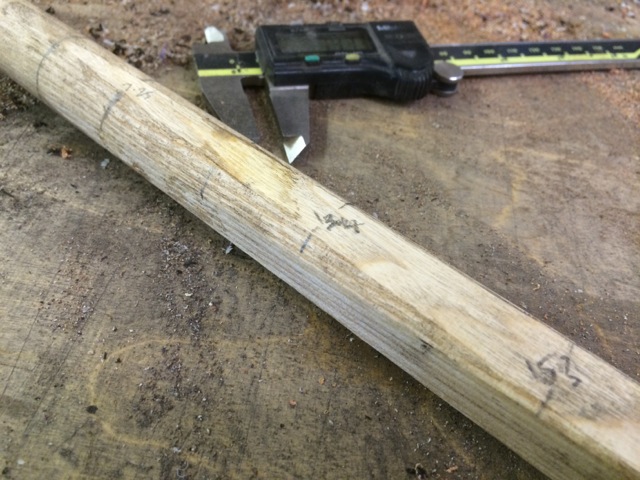
All four side measurements must be extremely close to ensure the final points both top and bottom are near perfect.
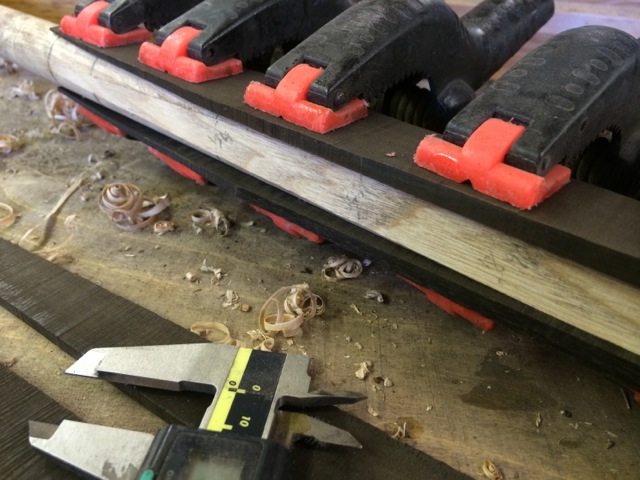
We are talking about fractions of a millimetre here and, even if you are only 0.5mm or 0.25mm out, you will have major problems trying to make all the points even at the end if you don’t get this right.
Cutting
Another fine detail that is very important is the way the wood is cut to get the ‘best’ looking splices.

This Macassar Ebony was cut at angles to follow the lines and suit the colour/grain. Other pieces may have more irregular pattern and would be best suited to being cut to maximise that particular look.
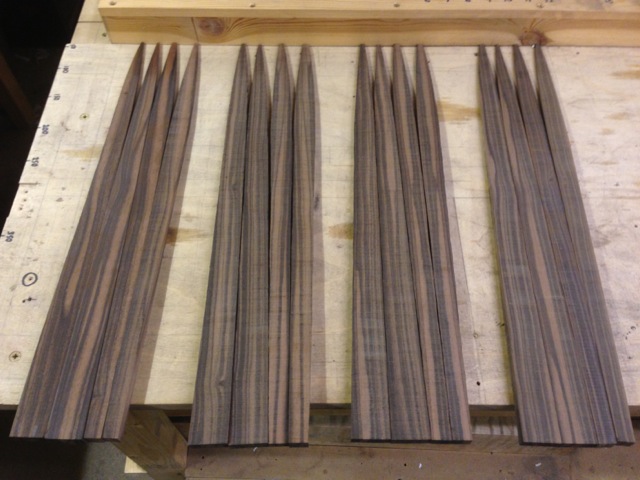
It is very easy to buy blank squares and simply cut splices evenly off, but often this does not reveal the best feature of the blank.
In these cases, much wood is sacrificed with angled cuts to reveal the best features. This works out expensive with much waste, but I think it is worth the effort.
Here is a classic example with Cocobolo. Instead of straight cuts, the cut was made at 45* to maximise the feature in the grain.
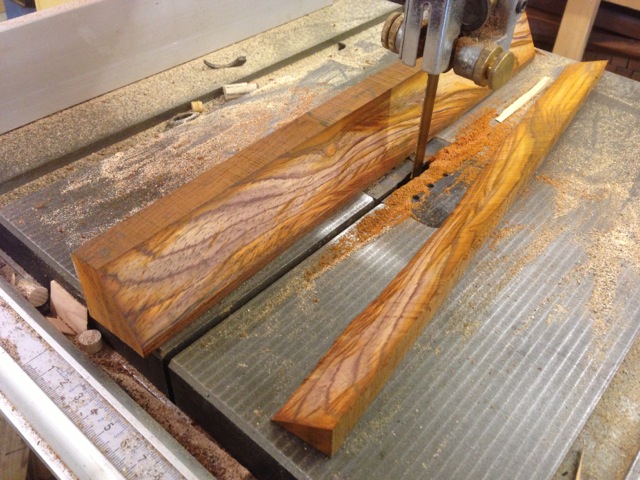
Cutting the corners off like this to reveal a small section in the middle that will be used means less than 50% of the piece gets used.
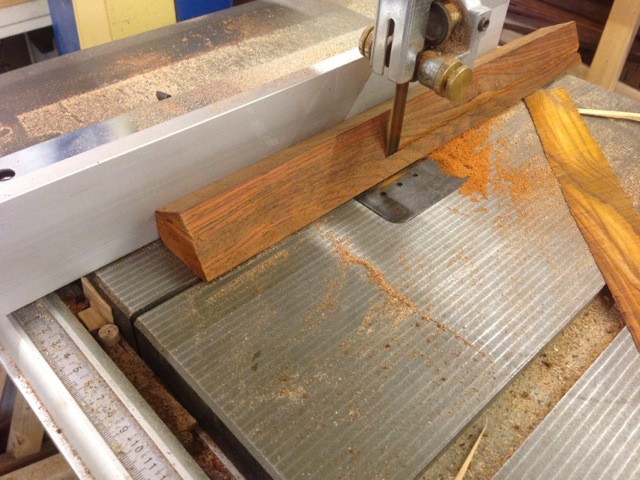
The end result meant a nice grain look was created…
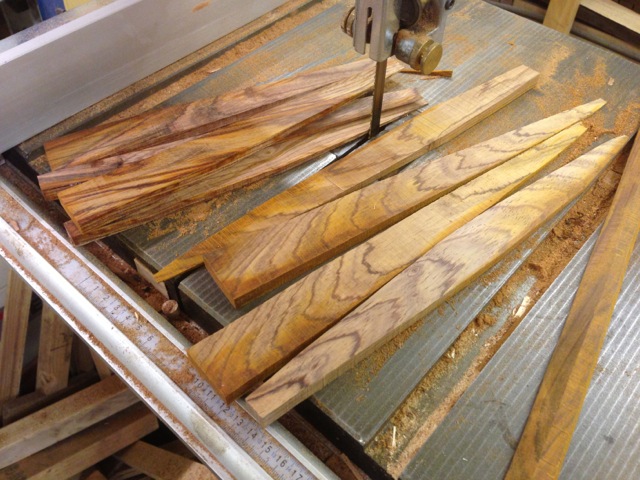
Okay, it cost twice as much to achieve, not to mention time spent working out exactly how to cut it, but the final cue looked better for it.
Shaping
When all butt splices have been stuck on, the bandsaw is used to quickly remove the excess prior to hand planing.

It’s a bit risky but saves a lot of time. Apart from when you ruin the cue because you cut too close and went into the main butt. Guilty as charged…
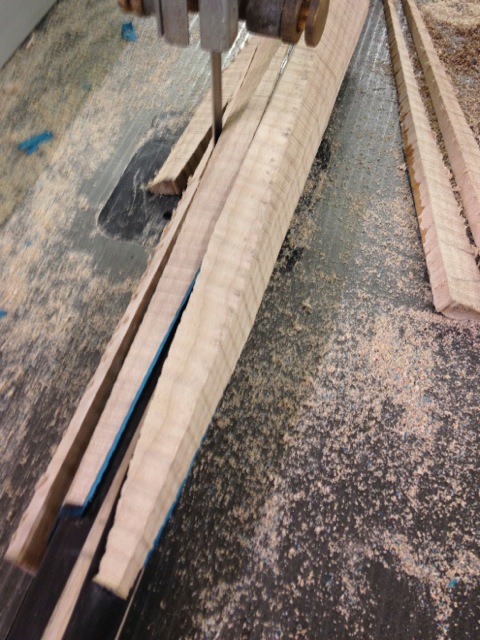
Skill
Apart from machines used to speed up the process, the vast majority of work, and time spent, is done by hand.
Whilst relatively simple, the hand skills developed, working specifically with cues, cannot be replicated by machine.
Several hand planes are used during shaft preparation, usually ending up with finer and finer cuts to make the cue nice and round.

Planing splices down to size can be very difficult, particularly with the harder woods, but the same methods are employed.

However, the unsung hero of the workshop is without doubt the humble scraper, a flat piece of metal, which is used constantly during final sizing to get the cue ready for sanding.
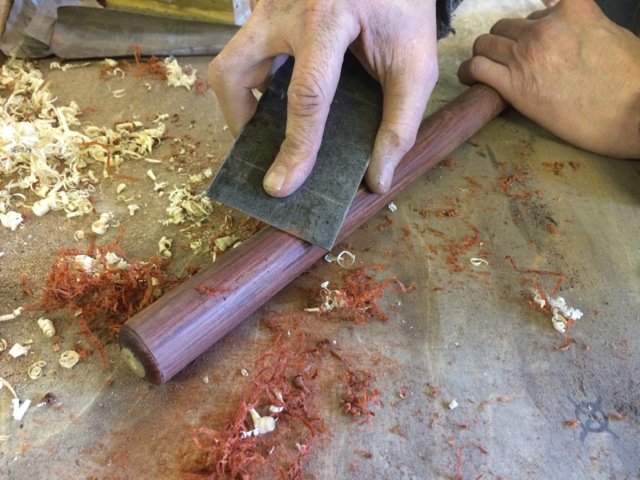
Less likely to tear the wood, and infinitely controllable. Far and away my favourite tool, and is used on shafts, splices, butts, everywhere and everything. Invaluable…

Once shaped to final size, all cues are sanded by hand, going through the grades of sandpaper to remove any scratches left on the cue. This is very hard work but it is the only way to achieve the desired finish.
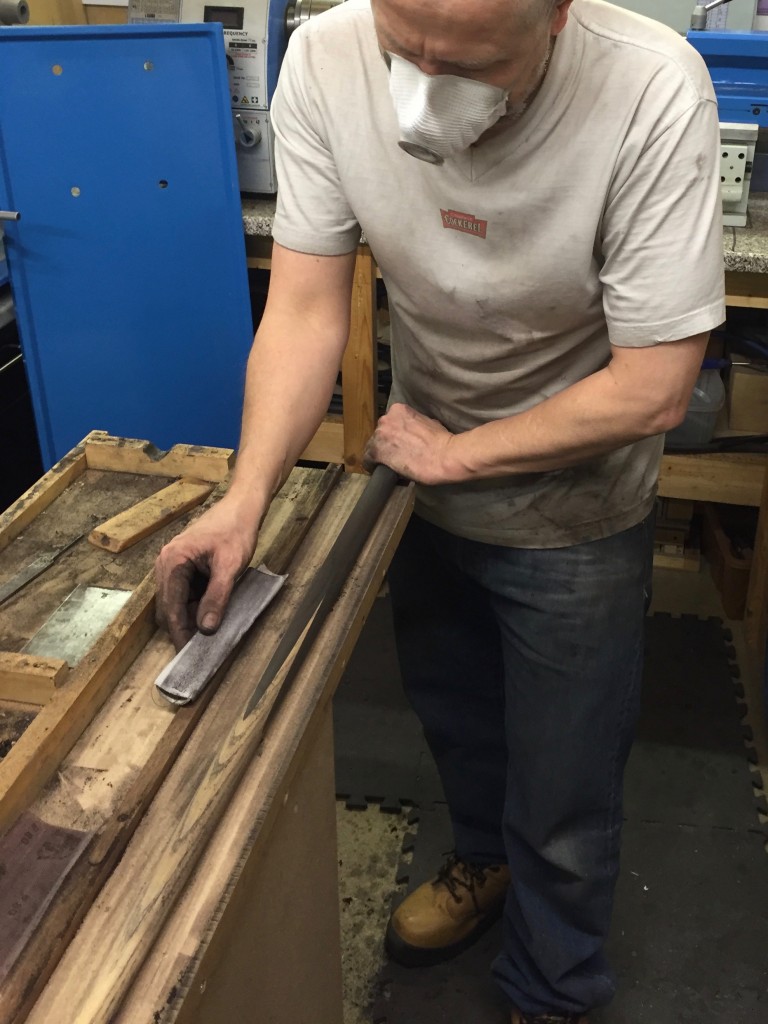
Particular time and effort is spent on the butt shape and around the butt area in general. We sand, stop, feel, repeat, until the butt feels really good in the hand.
You will find no ‘sharp’ edges often found on many other brand cues due to the fact they simply plane/cut the flat off and don’t take time to ‘blend’ the shape in. We prefer to do it until it feels just right… :)

(Those are not my nails by the way…)

The dust that is created by this arduous task is collected and used to highlight the grain on Ash shafts. I am not a fan of shop bought grain fillers as such because I prefer the feel of the shaft to be as natural as possible, but I do think Ash looks better with the grain highlighted.
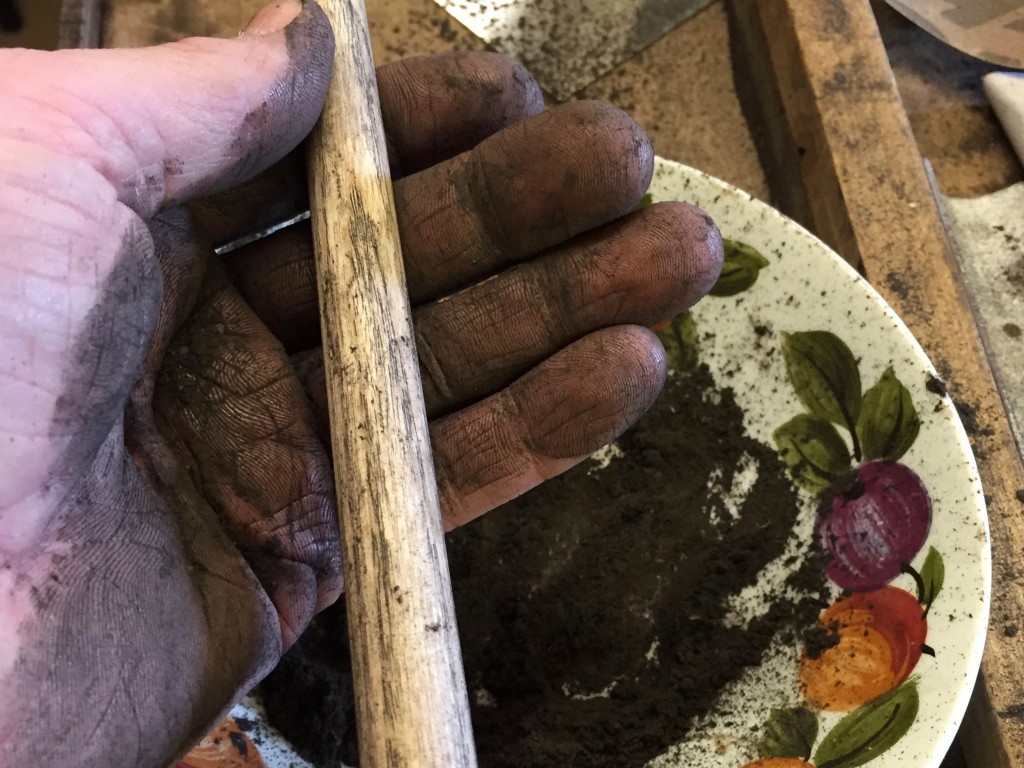
We do this this by rubbing our precious Ebony dust into the shaft until all the grain pattern is highlighted. Cue oil is then applied to bind all the dust together and permanently seal it into the shaft grain.
Eyesight
Sometimes, the human eye is not enough for the finer details…

You simply can’t get the accuracy required for some jobs with the naked eye alone, so magnification is often used for a variety of tasks to help get everything as good as it possibly could be.
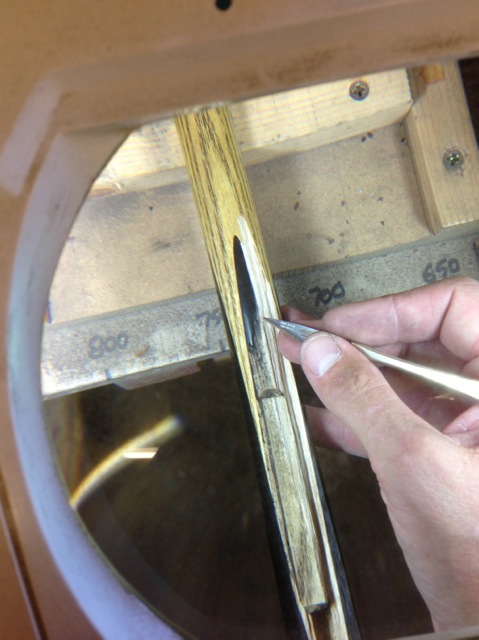
Lathe
All drilling, boring, joint work, and anything else like that is done in a lathe.
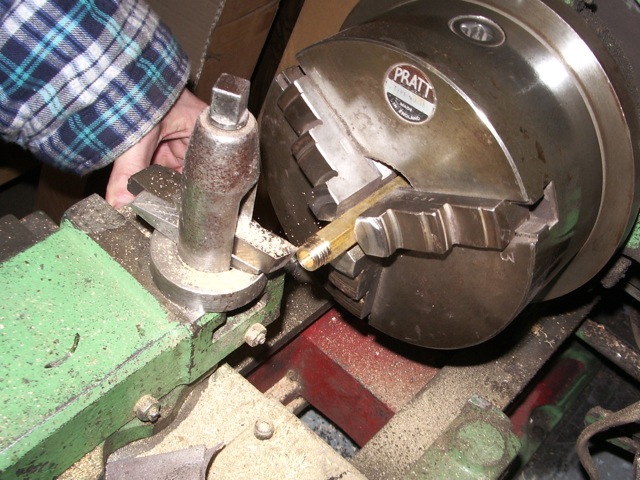
Replacement brass ferrules, and many other bits and pieces, are also made in-house, which ensures quality control in every aspect of the cue making process.
Cleaning
Finally, all the cutting and sanding that goes on creates a lot of dust, albeit quite beautiful in it’s own way.
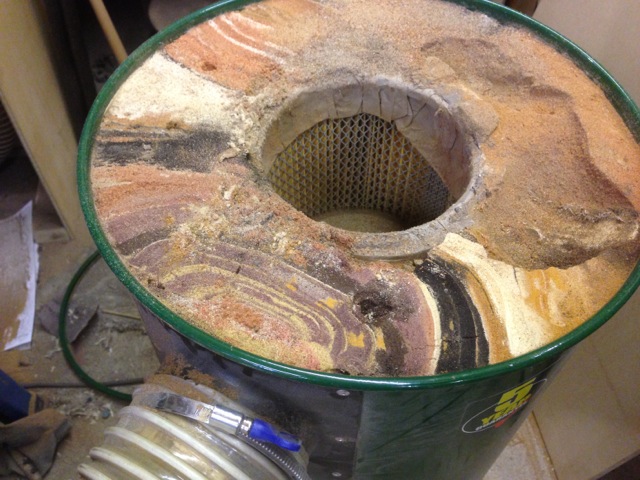
Finally, all the cutting and sanding that goes on creates a lot of dust, albeit quite beautiful in it’s own way.
In no particular order – Ash, Ebony, Cocobolo, Snakewood, Burrwood, Rosewood, Tulipwood, Kingwood, Macassar, Maple, Purpleheart, Olivewood, Ziricote, Bocotte etc., etc..

